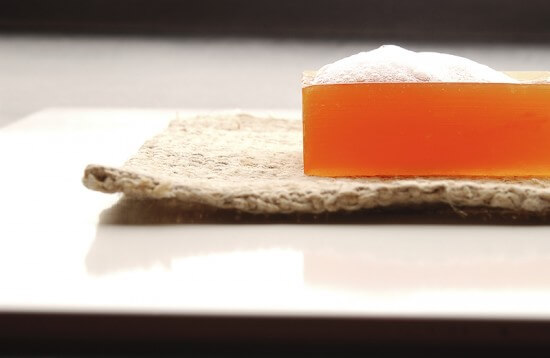
Making homemade soap is an enjoyable and easy craft. Do not be overwhelmed by the number of items that you may need. This craft is both affordable for making your own soap and wonderful to give as gifts. Be sure to let your creativity shine through by adding all sorts of things to make your soap unique.
Basic Homemade Soap-This soap is both lovely to use and fun to give as gifts.
What you will need:
- Soap Coloring
- Soap Fragrance
- Soap Molds
- Colored Crayons
- Thick Bath Towels
- Coconut Oil
- Distilled Waters
- Non-virgin Olive (not Virgin) Oil
- Vegetable Oils
- Vinegar
- Fragrant Essential Oils
- Lye
- Rubber Gloves
- Crisco Shortenings
- Candy Thermometer
- Measuring Cups and spoons
- Mixing Spoons
- Plastic Bowls
- Rubber Spatulas
- Stainless Steel Stockpots
- Stirring Spoons
- Mitre Boxes
- Safety Goggles
Instructions for the project:
Start by dissolving 12 oz of lye in 32 oz. softened (distilled) water in a plastic or glass bowl. For safety you may want to do this outside or under an exhaust fan. It is crucial that you add the lye to the water, and not the other way around. You can do this by pouring the lye slowly and in a steady stream, and stir constantly with a plastic spoon. Set the entire mixture aside to cool. The mixture will heat up considerably due to the lye reacting with fats in the oils.
In a stainless steel pot melt 24 oz. coconut oil and 38 oz. solid vegetable shortening. The next step is to add 25 oz. olive oil (not virgin) and any fragrance oils you want to use. Allow this mixture to cool completely. Heavily grease the soap mold with Crisco. When both the oil and lye mixtures have cooled to room temperature, then you can slowly combine them, adding the lye to the oils. Be sure to stir slowly and constantly. If you see bubbles, this indicates that you need to stir more slowly.
To test the soap drizzle the mixture into the pot once in a while. When it keeps its shape momentarily before sinking into the rest of the mix it is then time to add whatever extras you want. You do by stirring your botanicals, grains and coloring into a cup of soap taken from the mix. After completely stirring them in then combine that back into the original mixture. Carefully pour the soap into the mold. Wrap the mold in a towel and leave it undisturbed for at least 18 hours.
The soap mixture will heat up and then cool down. It is important to avoid uncovering it until it is cooled. After uncovering allow the soap to sit in the uncovered mold for another 12 hours. You can then begin to un-mold the soap by loosening the sides by wiggling the mold a little. Carefully turn the mold over onto a clean counter. You can then cut the soap into bars with a knife. Some people use a miter box in order to make square corners. You will need to allow the bars to cure for three to four weeks before using. Keep in mind that smaller bars will cure faster than larger ones.
Things you know about additives when making homemade soap:
- To make colored soap you can mix candle coloring into the oil solution. If it’s wax-based, melt it first in a couple of tablespoons of oil and then add it to the rest of the oil mix.
- You can also use crayons for coloring. Be sure to experiment with colors. Understand that purples are very difficult to keep true.
- You will need to use 1 tsp. per pound of soap of the following ingredients: cocoa powder for brown, cayenne pepper for pink-peach, liquid chlorophyll for light green, turmeric for yellow, paprika for peach and titanium dioxide for white.
- You will use 1 oz. essential oil to scent a 4-lb. batch of soap.
- For a great smelling soap use 2 tsp. ground cloves. You can also try grated orange or lemon peel or ginger, too.
- Consider using rose water instead of regular water for rose soap.
- Oatmeal makes great complexion soap. You can also add 4 oz. cornmeal for a gritty texture.
- You can make soap with 1/2 oz. geranium oil for dry skin.
- Use tea tree oil (1/2 oz.)for problem skin.